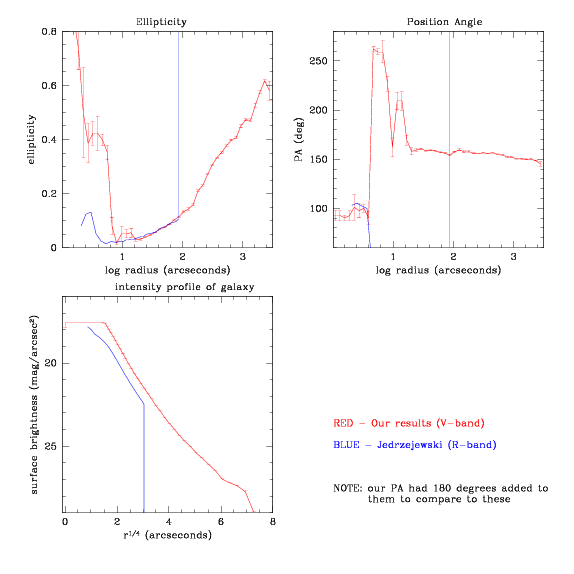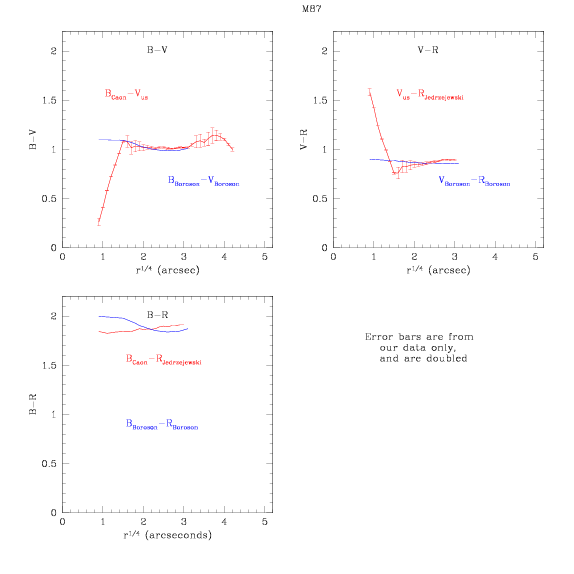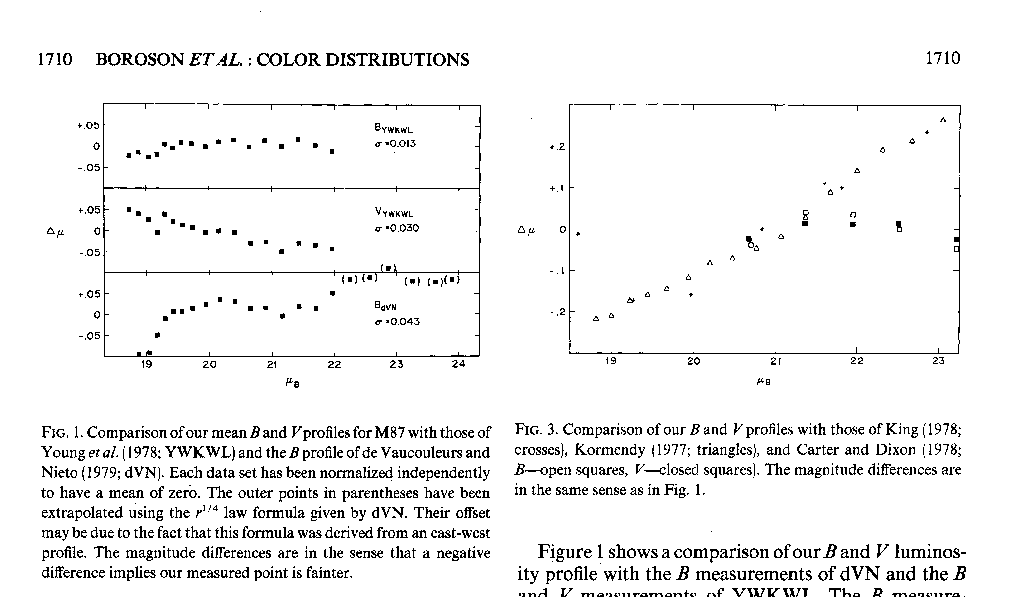M87 - (updated) comparison to
literature
(this is using the new extrapolated/stitched-together
fitting/subtracting method)
From Caon et al
(1990)
From Jedrzejewski (1987)


COLOR comparison:
Our data - V-band
Caon - B-band
Jedrzejewski - R-band
Boroson - V, B, R bands [shown in blue]

(extra bit from Boroson et al 1983)
In M87 the situation is slightly different; the largest nuclear
gradient is in R-I and is in the sense that the nuclear R-I color is
quite blue. This is likely due to the Halpha emission known to arise in
the nucleus of M87 (Ford and Butcher 1979). In support of this
explanation, note that the V-R color is offset by almost as large an
amount in the opposite direction. Another interesting aspect of the
colors near the nucleus in M87 is the fact that B-V continues to get
redder all the way in to the center. This supports the contention of
Dressler (1980) that only a small amount of the V-band light in the
nuclear spike of this galaxy comes from a nonthermal source.
...
M87 shows the strongest color gradient in B-R, becoming bluer by almost
0.15 mag between the innermost plotted point and log r = 1.7. Ths slope
of this change is roughly constant in log r, out to radii where
systematic photometric errors begin to affect the profiles.
...
M87 shows a slight blueing inward at very small radii, which might be
due to the weak extended Halpha emission (Butcher and Ford 1980).




